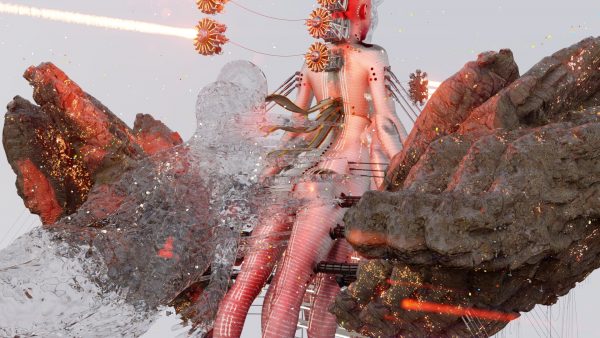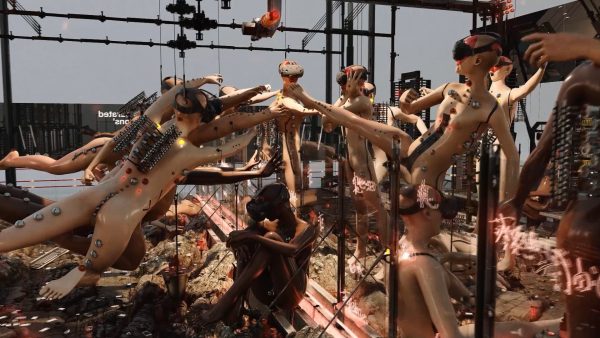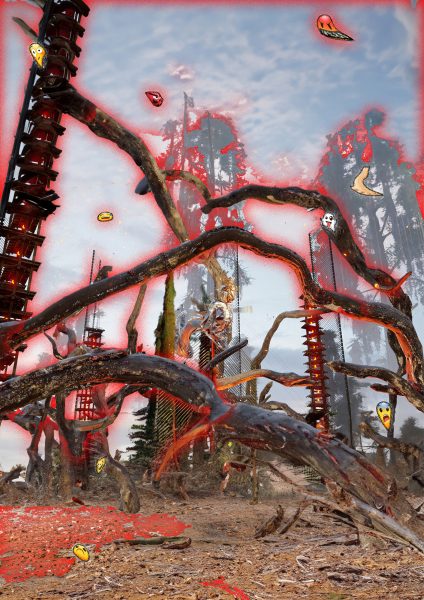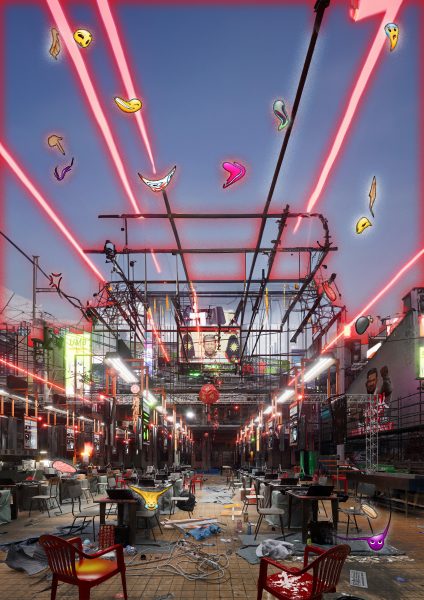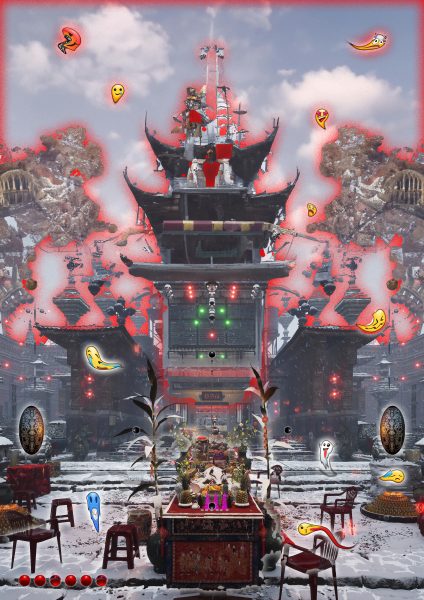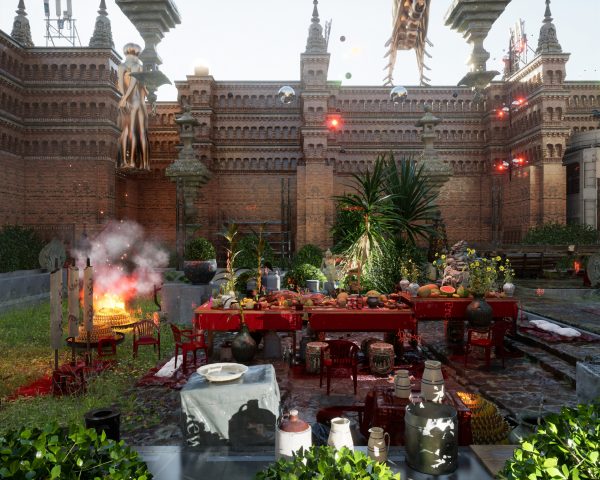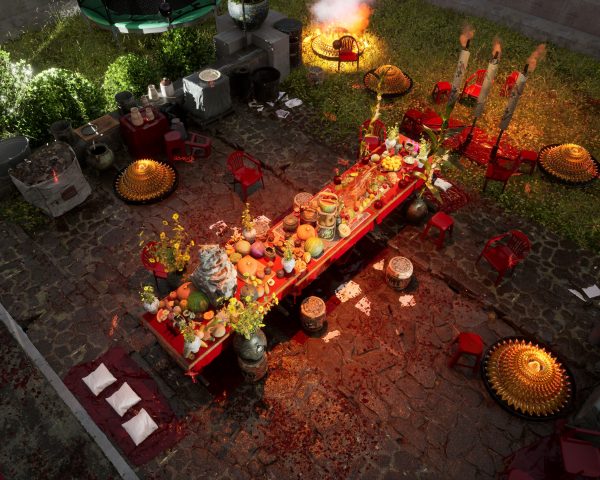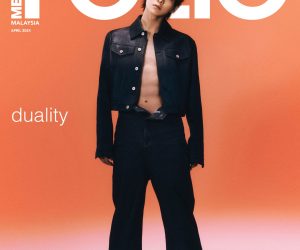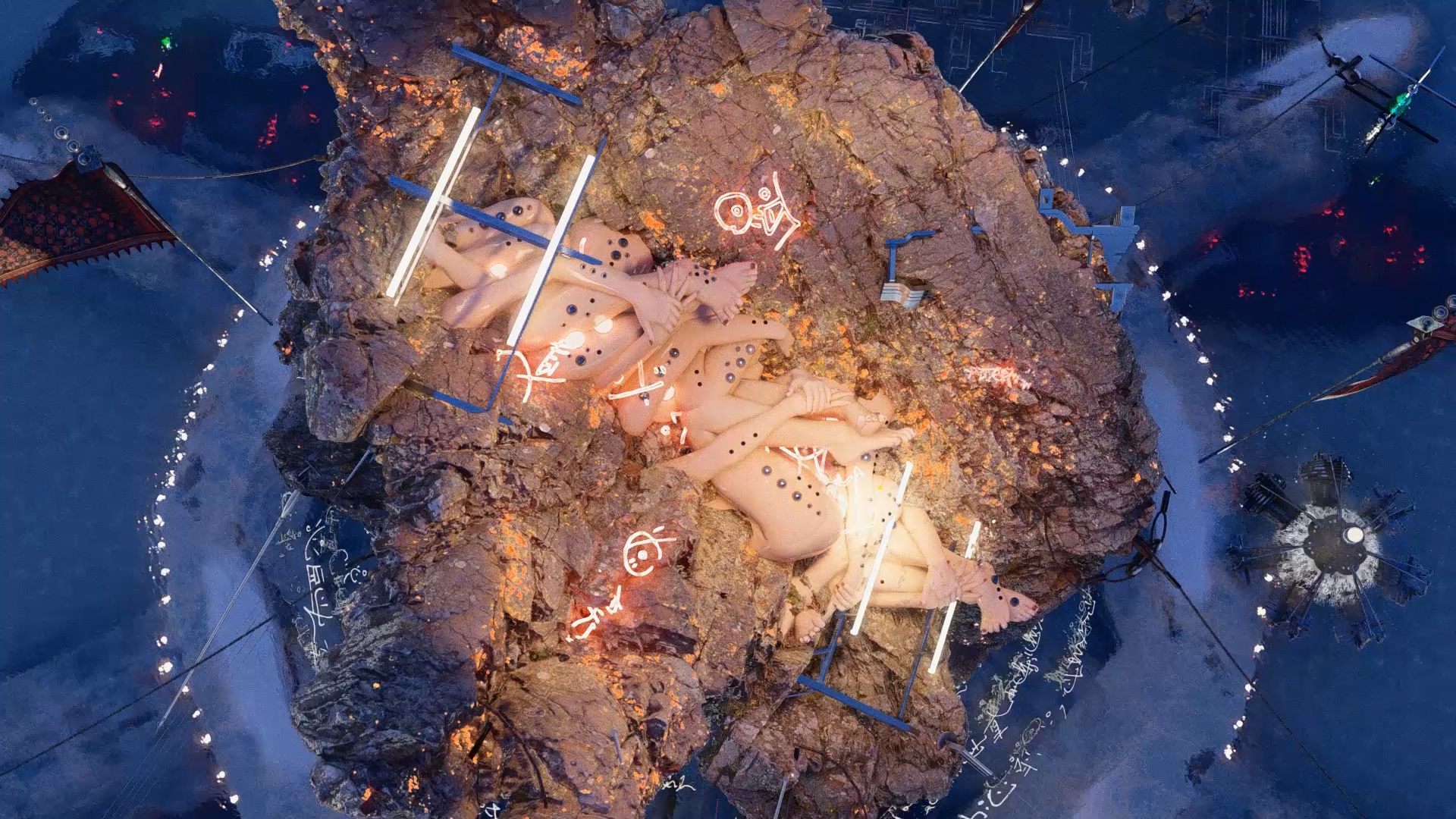
Humans are naturally drawn to the unknown; mysteries excite us. Within ourselves, there will always exist a deep desire to question. Philosopher Oscar Wilde challenged how society perceives beauty, and Carl Jung delved into the intricacies of human behaviour; these renowned thinkers have driven us to probe the depths of our consciousness. Time shifts, yet the age-old questions of “whys” and “what ifs” persist. We find ourselves on the precipice of a new era characterised by the dominance of artificial intelligence and technology. In this age of constant digital innovation, what answers might we seek?
Meet Chong Yan Chuah, an architect and poet of virtual space, with a title that, while seemingly extravagant, aptly captures the essence of his creative pursuits. “Do you know those shower thoughts that send your mind into a spiral?” he laughs. “I like to read, and I’d say I’m a deep thinker. The digital meta-worlds I’ve created are an extension of my mind and thoughts. They represent a delightful alternate twist on how I think reality can manifest, or perhaps, what it may evolve into in the future.”
Birthing Somni, a studio that merges art direction and research, Chong Yan nurtures his creative vision through the intricate language of computer code. As a collaborative haven for creative minds, Somni holds the pledge of transforming imagination into visuals and alternate worlds on your computer screen. “Digital world-building knows no bounds, which is why our clientele spans a wide spectrum, from partnering in Research and Development for an architectural firm to crafting CGI artworks for SONY Music,” he explains.

In essence, Chong Yan’s designs are a portal to a world where the impossible is made possible. His canvas? The digital realm — a boundless expanse where he meticulously sculpts three-dimensional designs imbued with narratives and ideas that challenge the very boundaries of our perception of reality.
With a background in architecture from the Architectural Association (AA) in London and the esteemed honour of receiving the 2014 RIBA President’s Medals nomination, Chong Yan has left an indelible mark on world-building projects. In his work titled “27 Years of Lazarian Delights” he artfully blurs the line that separates reality from the realm of imagination, leading him to ponder, “When does passion end, and obsession begin to define me?”
In the meticulously crafted world he constructed, Chong Yan delves into the fundamental aspects of existence — a universe governed by its unique set of physical laws, a planetary sphere inviting exploration of its intricate geo-system, and a domain teeming with bio-life, all intricately explained in a self-made native language. This is a language he not only speaks but also comprehends and documents.
The initial phase of his artistic journey expounds upon the grand scale of his universe and unveils the cartography of his world. Yet, beneath the surface of this world lies the biospecimens he has thoughtfully planted for discovery in the distant future. As he puts it, “The concept revolves around leaving behind artefacts destined for eventual revelation; there can be no ‘true’ world without a trace of its past.”
At the heart of his work, Chong Yan is both a thinker and a storyteller. Fueled by emotions, his guiding star is his never-ending curiosity. For him, digital world-building alone is insufficient; he also raises questions about digital identity through his art project “FAC3D” (2021).
“Who are we, if not the books we read, the songs we listen to, and the movies we watch? Our environment significantly shapes human perspectives and ideas, and in today’s world, our every consumption is online,” he continues. “We leave digital footprints with every interaction, essentially creating a digital version of ourselves composed of data and numbers. Through FAC3D, I aim to delve into this very concept within the digital realm — a quest to understand how identity is shaped online.”
Earlier this year, we were greeted by the new boogeyman for every working millennial: GPT (Generative Pre-trained Transformer) was rumoured to threaten jobs and replace workers. This software is designed to understand and generate human-like text based on the input it receives. It has been proven capable of solving various problems and answering prompts across different industries. Chong Yan sees this as a chance to experiment.
For FAC3D, he masterfully breathed life into three digital personas using the transformative power of OpenAI: Aahan Prakash, Mikhail Himi, and Skylar Ang. These meticulously handcrafted entities were more than mere algorithms; they were the embodiment of distinct personalities. Each digital spirit was nurtured through a carefully curated selection of literary works thoughtfully chosen to resonate with their characters. This distinction of literary essence would go on to shape their words of choice, refine their expressive styles, and sculpt the landscapes of their social perspectives.
The project FAC3D invites us to contemplate the line between originality and borrowed ideas, a fascinating visual representation of how human minds are moulded by others. In a world where every thought bears a trace of someone else’s inspiration, how much of our ideas can we genuinely call our own?
Technology has often been portrayed as haunting and ominous when envisioning distant futures, with a dystopian world representing a “21st-century nightmare. “The relationship between technology and humans is a grey area, but it’s unfair to villainise technology when we’re the ones in control,” Chong Yan believes. He sees technology as neither inherently good nor bad but a tool shaped by human choices. So, what are we constructing to influence what lies ahead?



